
For the week ending October 4, weekly grain export inspections continue to show favor for corn, with soybeans slumping and wheat also struggling to keep pace from last year’s volume.
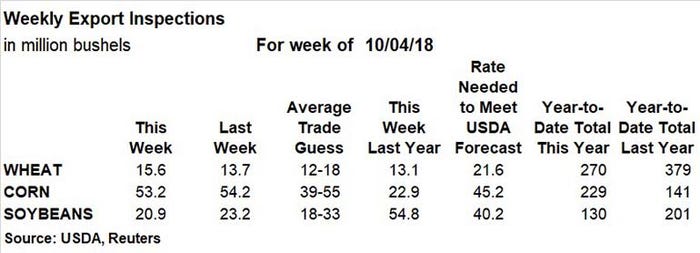
“Corn and soybeans continue to trade places in the export market due to lack of any grain Chinese shipments last week, via fallout from the ongoing trade dispute,” says Farm Futures senior grain market analyst Bryce Knorr. “Normally, soybeans dominate the export pipeline early due to China’s buying, with corn movement spread out over the marketing year. But corn is flying off the shelves this year, while soybean demand likely will take longer to build.”
Corn export inspections last week reached 53.2 million bushels, down slightly from the prior week’s total of 54.2 million bushels but landing on the high end of trade estimates that ranged between 39 million and 55 million bushels. Last week’s total also more than doubled year-over-year results of 22.9 million bushels and pushed the weekly rate needed to meet USDA forecast slower, to 45.2 million bushels. Year-to-date totals of 229 million bushels are tracking 62% ahead of the prior marketing year so far.
Japan was the top destination for U.S. corn export inspections last week, with 15.2 million bushels. Other top destinations included South Korea (10.3 million), Mexico (9.9 million), Colombia (5.6 million), Guatemala (3.0 million) and Egypt (2.3 million).
Soybean export inspections last week, meantime, reached just 20.9 million bushels, falling slightly below the prior week’s total of 23.2 million bushels and on the low end of trade estimates, which ranged between 18 million and 33 million bushels. The weekly rate needed to match USDA forecasts increased to 40.2 million bushels, and marketing year-to-date totals for 2018/19 reached 130 million bushels – down 35% from the prior marketing year.
The Netherlands was the No. 1 destination for U.S. soybean export inspections last week, with 3.1 million bushels. Other top destinations included the United Kingdom (2.5 million), Pakistan (2.5 million), Egypt (1.9 million), Portugal (1.8 million) and Indonesia (1.6 million).
Wheat export inspections reached 15.6 million bushels last week, which was slightly above the prior week’s totals of 13.7 million bushels and in the middle of the average trade guess, which ranged between 12 million and 18 million bushels. Still, the weekly rate needed to meet USDA forecasts moved higher, to 21.6 million bushels, and marketing year-to-date totals of 270 million bushels are trending about 29% below the prior marketing year’s pace of 379 million bushels.
“Wheat inspections remain ho-hum, still lagging the rate USDA’s forecasts for the marketing year,” Knorr says. “That could convince the agency to lower its forecast of 2018 crop sales in Thursday’s production, supply and demand report.”
Vietnam was the No. 1 destination for U.S. wheat export inspections last week, with 2.9 million bushels. Other top destinations included Indonesia (2.6 million), Mexico (2.0 million), Taiwan (1.9 million) and South Korea (1.7 million).
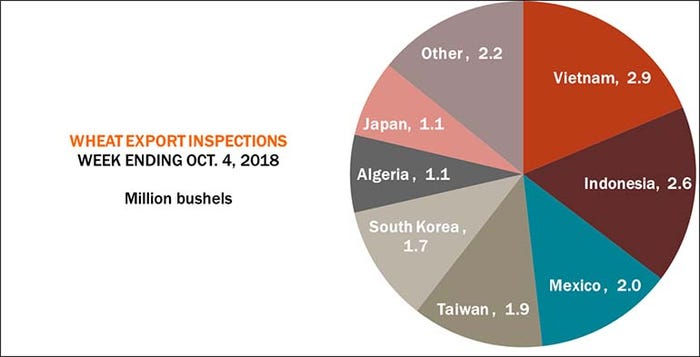
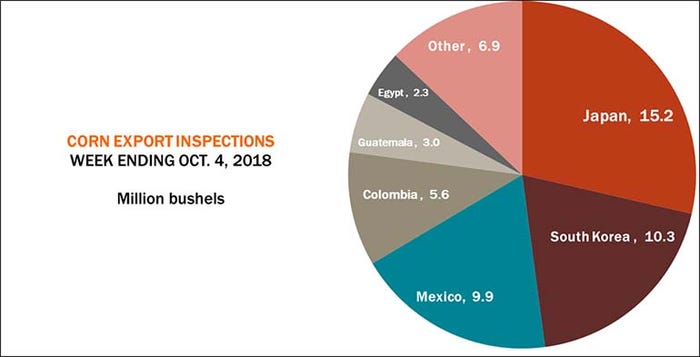
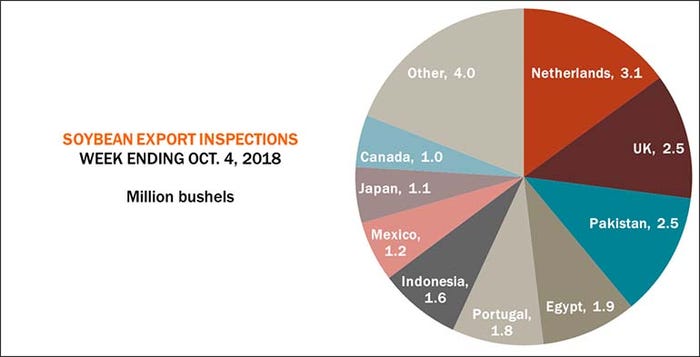
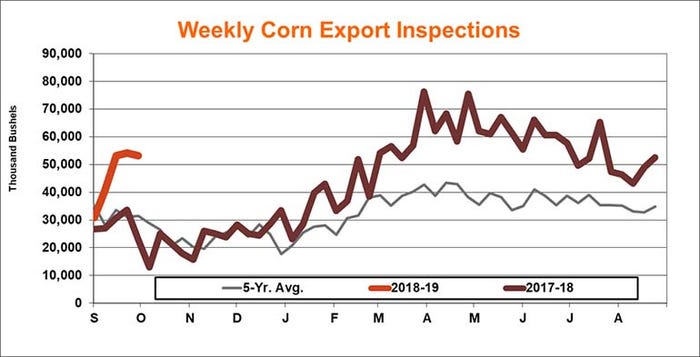
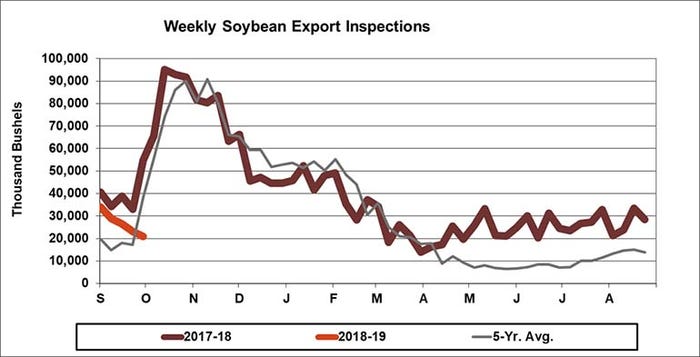

About the Author(s)
You May Also Like






